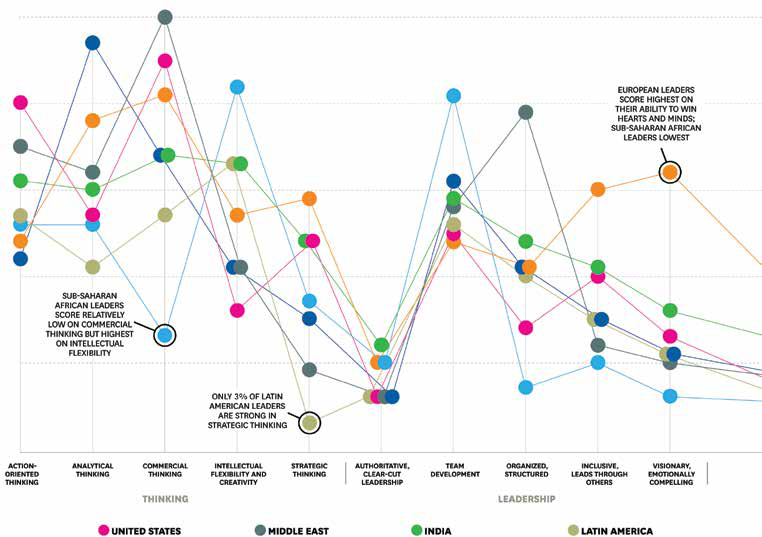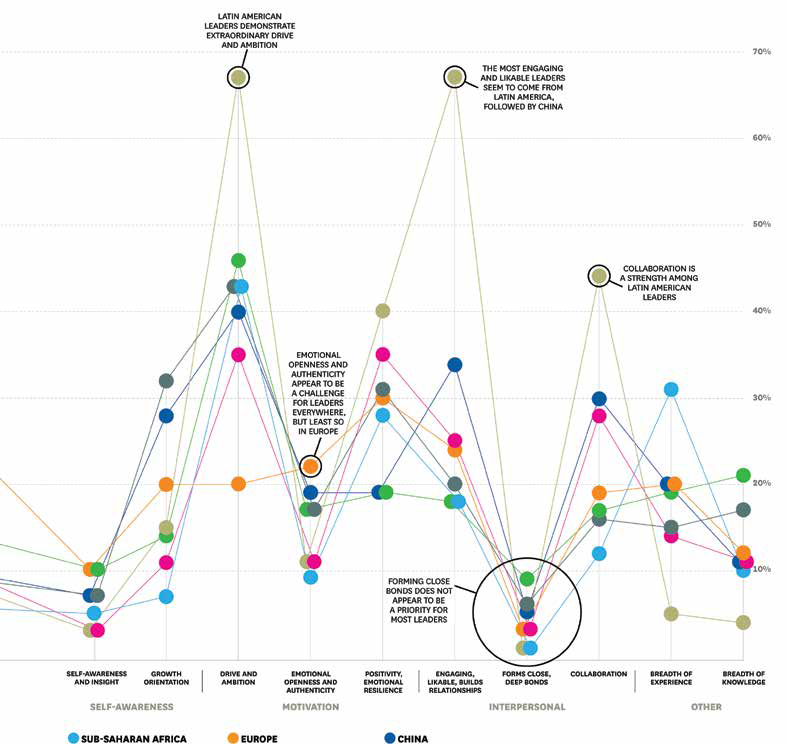
CHEAT SHEET
- The law school illusion. Don’t let passing the bar fool you into thinking being an effective lawyer is just about legal knowledge. Practicing law is more than just showy display of technical prowess.
- The lawyer personality. Lawyers tend to have skeptical minds, a high ego drive, impatience, and they often struggle with empathy and taking criticism. These are all barriers to developing emotional intelligence.
- You do have the time. Developing emotional intelligence requires some reading. Get creative — instead of trying to squeeze in a quiet moment to read, listen to audiobooks.
- Warm up your muscles. The warm-up test to measure you current level of emotional intelligence is short and no studying is required. It’s like stretching before a run.
How many times have you seen several hundred lawyers agree on something? Prior to last year’s ACC Annual Meeting, my answer would have been, well, never. But that’s exactly what happened last fall in New Orleans. Voting with their feet, over 600 lawyers told us something important. For the most popular session, they filled a cavernous convention hall. It was literally standing room only. For many attendees, the only option was to park themselves on the carpeted floor. Still more ACC members joined on a national webcast.
What subject generated such intense interest? Was it current developments in compliance programs? Or the year in review in securities law? How about contract management? No, no and no. The topic was emotional intelligence.
Surprised? I certainly was. I was a panelist and expected an audience of 100 or so. After all, we lawyers can be a pretty jaded lot. Many of us view our jobs primarily as an exercise in issue-spotting and analysis, followed by a showy discussion of how much we know. And emotional intelligence (EQ) doesn’t have much to do with that.
But ever-increasing numbers of in-house lawyers are realizing that this outmoded model won’t get us over the finish line anymore. The winds of change are blowing, and a new consensus is emerging about what we all must bring to the table. In this new paradigm, our core competencies must include emotional intelligence.
Still don’t buy it? Then consider this. On the heels of last year’s sold out Annual Meeting session, both the ABA and the Practicing Law Institute presented — in quick succession — programs on this topic. A coincidence? Not likely.
This article is designed to give you a path forward in this changing environment. We’ll begin with an overview of EQ. Then we’ll discuss two barriers — unique to us as lawyers — that often impair our development of this important skill set. Finally, we’ll take a trip to the EQ Gym for a few workouts designed to get us into shape.
What is this EQ thing anyway?
The term “emotional intelligence” became part of the national lexicon in 1990s when Daniel Goleman’s book of the same name topped the New York Times best seller list. Numerous books and articles have followed. One of the most notable is Emotional Intelligence 2.0 by Travis Bradberry and Jean Graves. Articles and blog posts from The Harvard Business Review and other leading business magazines regularly address this topic.
There are different formulations of emotional intelligence, but typically, EQ is said to have four building blocks:
- Self-awareness: being conscious of what we’re feeling
- Self-management: deciding whether to express our emotions, and if so, how
- Social awareness: reading others, whether one-on-one or in a group
- Relationship management: acting to enhance our relationships, or at a minimum, not impair them
Another way to break down emotional intelligence is to examine the personal qualities that support it. I call them the foundational attributes:
- Presence: being fully engaged where we are and in what we are doing
- Authenticity: being ourselves and being comfortable in our own skins
- Respect: having respect for ourselves and others
- Empathy: viewing situations through someone else’s eyes
To see how these concepts fit together, let’s consider a hypothetical, based on a situation many of us have encountered. Your company is facing a major competitive threat. Sales are down and trending lower. The stock price has tanked. Even you are wishing you’d sold some shares months ago. Costs have risen much too fast, and cuts are on the way. A new CEO has just been hired, and the board has given her a mandate for change.
The new CEO is hired on Friday. On Saturday morning, you receive an Outlook meeting invitation for Monday morning. The caption of the email tells the story: The meeting will be about “rightsizing our company.” You’ve been around the block a few times, and you know what that means — layoffs. Your world has devolved into crisis mode.
On Monday, you’re presented with a list of the people whose jobs are on the chopping block. You’ve known many of them for years. In fact, you see many of them daily. You’re asked to evaluate the list and comment on the litigation risk associated with each candidate. Your legal advice may tip the balance on who survives and who doesn’t. Stressful? Yes it is. High stakes? Very. Important? Absolutely.
You feel two kinds of emotions. In the first group are feelings like guilt, nervousness and anxiety. In the other group are competing emotions like a sense of duty and loyalty to the company, as well as a desire to excel in your job.
People are arguing about who should be on the list, and members of senior management are lobbying you. You have good relationships with them, and many are good friends. But as they present their arguments, you find — not surprisingly — that sometimes you agree with them, and sometimes you don’t. In this environment, how do you stay focused, keep your cool and preserve your key business relationships?
This situation illustrates the four building blocks of emotional intelligence, as well as the importance of the foundational attributes:
- Understanding exactly how you feel (self awareness/being present).
- Coping with the stress and your conflicting emotions while staying true to your core values (self management/respect for self/authenticity).
- Sensing the mood and objectives of the people you are working with, and maintaining your relationships with them in a high-stakes debate (social awareness/relationship management/empathy).
In other words, the principles of EQ would be a key source of guidance in navigating this thicket.
A Brief History of Emotional Intelligence
The article “What Is Emotional Intelligence?” by psychology expert Kendra Cherry offers the following timeline.
- 1930s — Edward Thorndike describes the concept of “social intelligence” as the ability to get along with other people.
- 1940s — David Wechsler suggests that affective components of intelligence may be essential to success in life.
- 1950s — Humanistic psychologists such as Abraham Maslow describe how people can build emotional strength.
- 1975 — Howard Gardner publishes “The Shattered Mind,” which introduces the concept of multiple intelligences.
- 1985 — Wayne Payne introduces the term emotional intelligence in his doctoral dissertation entitled “A study of emotion: developing emotional intelligence; self-integration; relating to fear, pain and desire (theory, structure of reality, problem-solving, contraction/expansion, tuning in/coming out/letting go).”
- 1987 — In an article published in Mensa Magazine, Keith Beasley uses the term “emotional quotient.” It has been suggested that this is the first published use of the term, although Reuven Bar-On claims to have used the term in an unpublished version of his graduate thesis.
- 1990 — Psychologists Peter Salovey and John Mayer publish their landmark article, “Emotional Intelligence,” in the journal Imagination, Cognition, and Personality.
- 1995 — The concept of emotional intelligence is popularized after publication of psychologist and New York Times science writer Daniel Goleman’s book Emotional Intelligence: Why It Can Matter More Than IQ.
Our first challenge: the law school illusion
As lawyers, we face two special challenges to developing EQ. To illustrate the first, I want to take you back in time … to your first year of law school. Picture the front of the building, and see yourself walking inside on your way to your first torts exam. Now, in your mind, visualize the face of your torts professor. Don’t tell me you can’t remember him or her. I know you do.
One of my torts professors was Joe King, a wiry man with a shock of white hair atop his head. He had a deep, resonant voice, through which my classmates and I were frequently reminded just how little we knew and how far we had to go. Remember the professor who would bust your chops if you hadn’t read the footnotes? That was Professor King.
For Joe King’s torts exam, I was on a mission. I was going to show him just how much I knew. I was going to identify every issue, from significant to obscure. I would miss nothing. He would see just how smart I was.
Let’s stop our story, and let’s give my mindset a name. I call it the Law School Illusion. It’s the notion that practicing law is all about the showy display of technical prowess.
In our law school years, the Law School Illusion is drilled into our heads. We don’t just have exams in torts. We have three years of tests and papers. The objective is always the same. Show them how much we know. Show them we haven’t missed anything — even the most trivial detail.
After graduation, does that mindset change? The answer is obvious when you consider the next step: the bar exam. After all, what is it designed to do? Measure legal knowledge.
Is our thinking suddenly transformed after we pass the bar? Probably not, because our professional lives then begin. And what is our mission at that stage of our careers? Building our credibility by showing everyone just how smart, thorough and dedicated we are.
For many of us, the light begins to dawn only years later. We realize there is more to being effective than legal knowledge. There is more to being a lawyer than spotting every arcane issue and analyzing it to death. There is more than showing off how technically proficient we are. So, the question then becomes, what is missing and what is the other piece of the puzzle?
The second challenge: the lawyer personality
I hate to break the news to you, but we lawyers can be a difficult lot. We tend to share certain personality traits that make us hold onto the Law School Illusion. Those attributes make it a challenge to cut through the fog to see reality. Let’s take a look at some data about these personality traits, amassed in a survey of high-performing law firm lawyers by Caliper Corporation and Altman Weil. Brace yourself, because it’s not pretty. In comparison to the general public, these lawyers are:
- Almost twice as skeptical;
- About 1.5 times more impatient;
- Over four times less sociable;
- Highly independent; and
- Nearly 50 percent less resilient.
Richard, L., “Herding Cats: The Lawyer Personality Revealed,” Altman Weil Report to Legal Management, vol. 29, 1-12, Aug. 2002.
A recent study of a large international legal department shows some similar patterns for in-house lawyers. In comparison to the general public, the members of this in-house legal department are:
- About 50 percent less empathetic;
- Significantly less resilient;
- About 40 percent more skeptical;
- Much more independent;
- Less sociable (though much more sociable than the law firm group); and
- About 50 percent more impatient.
Hartman, M., Mordan, V., Schoenfelder, T. and Sweeney, P., “The Perfect Legal Personality,” ACC Docket, July/Aug. 2011. Significantly, this study concluded that improved emotional intelligence is fundamental to the success of in-house lawyers. Id. at 37.
It’s pretty easy to see the common threads. High skepticism tops the list. In addition, we in-house lawyers have a high ego drive, tend to be impatient, struggle with empathy and don’t take criticism well.
Like the Law School Illusion, these tendencies are barriers to developing emotional intelligence. For example, a highly skeptical nature may cause you look at EQ as psycho-babble. But as the emerging consensus and years of research and analysis demonstrate, we now understand this conclusion is wrong. That’s one reason why several hundred ego-driven, skeptical, empathy-impaired lawyers crammed themselves into a convention hall to learn more about EQ and find a path forward.
Attracting EQ Talent
In a recent blog post, Daniel Goleman discusses what companies can do to attract new employees and potential leaders, particularly those from the Millennial generation, who have a high EQ. He writes: “As companies are grappling with the question of how to attract and energize Millennials –– on whom the future of their business will depend — here’s a tip: do some good.”
There are endless ways to mix business and making the world a better place, and none of them need hamper the business side. Any of them will make a workplace more appealing to this new generation of talent.
The Greyston Bakery in the Bronx does a high-volume business shipping its brownies up to the Ben & Jerry’s ice cream factory in Vermont, where they get mixed into the popular Chocolate Fudge Brownie flavor.
But the Greyston Bakery was not founded as solely a profit-making business (though its doing just fine in that regard); the Bakery’s mission was to train and house homeless people, those just out of prison, and others on the economic fringes, giving them a sound way to make a living.
Game on: the EQ gym
Now it’s time to start down this path. It begins in that overcrowded convention hall and leads to a place I call The EQ gym.
I hear the groans, and I know what you’re thinking. A gym? I didn’t sign up for that. But don’t get the wrong idea. This won’t be like training for a marathon — or even a 5K for that matter. It’s true this will take a pinch of discipline and a dash of commitment, but here is what I’m asking for: Give me 15 minutes a day for 60 days.
I know what that skeptical streak is telling you. If you won’t agree to head to the EQ gym right now, at least commit to finishing this article. Then, I’m betting you’ll be ready for the rest.
Dispensing with the “I don’t have the time” objection
No doubt, many of you are torn. You want to learn more. You know you need to. But you’re wondering where you’ll fit it in. You’re already overcommitted. If you have a family, you probably dash out of the house in the morning to get the kids to school. Then, in the evening, there’s dinner and homework. You’re usually working after you put the kids to bed, just to keep up. Then, you stay up too late getting it all done. Over the weekend, there are soccer games and sleepovers. The next week is the same. If you’re single or an empty-nester, your life doubtlessly has a similar, overtaxed rhythm.
But I’m going to stick to my guns. You have the time. You just have to be creative with how you use it. Our trips to the EQ gym will involve some reading. So, let me make a suggestion: use audiobooks. Instead of looking for a quiet moment to read (which in my life, almost never happens; or when it does, I fall asleep), I listen to audiobooks while doing something else: running, doing the dishes or driving to work. There are several spots in your life where you can put on your earbuds for a few minutes every day.
The easiest way to plug into audiobooks is Audible.com. It’s affiliated with Amazon, so your Amazon login information will work. The least expensive way to use Audible is through a paid membership. It’s $14.95 a month, and you can cancel at any time. Your first audiobook will be free, and you’ll get a book every month. Audible also has a great iPhone app. You can access any book you’ve ordered (Audible calls it “Your Library”), wherever you are in the world. I’ve used the app on both coasts and on both sides of the Atlantic.
So, stay with me. It’s time to warm up.
The EQ warm up
Your warm-up is a test. I know, I know. After taking the bar, you promised yourself it would be your last exam. Don’t worry. This test is short. It will take about 10 minutes. No studying is required. Grades don’t matter. It’s about measuring your EQ in a general way, and about getting your mind focused. It’s like stretching before you go for a run.
To take the test, you’ll need to buy a copy of Emotional Intelligence 2.0. You have several choices. If you go the Audible route, make this your free book. A hard copy edition is around $15 from Amazon; a Kindle version is just under $9.
If you buy a traditional book, don’t begin by reading it. Remember the Stephen Covey mantra about starting with the end in mind? That’s what we’ll do here. Start at the end of the book — seriously. There, you’ll find an insert that looks like a letter. Inside is a code. If you order from Audible or choose a Kindle edition, you’ll receive it in an email.
After you receive your code, go online to www.TalentSmart.com/test and follow the directions. The questions are general, and frankly, sometimes a bit broad. But by taking the test, you’ll achieve two things. You’ll get a feel for each of the four EQ components, and you’ll get a general idea about your strengths and weaknesses. The first brick of your EQ foundation is now in place.
Workout 1: popcorn and the movies
My wife and I are movie addicts. One of our favorite date night choices is a large popcorn and the silver screen. The second workout has those same two ingredients. The first step? Put a bag of popcorn in the microwave. Bring it over to your iPad or laptop, and get comfortable.
The second workout can also be found on the TalentSmart website. After you take the EQ test, you’ll see two other resources there: “EQ Strategies” and “EQ Lessons.” The strategies point to opportunities for improvement and contain references to sections in Emotional Intelligence 2.0. The “EQ Lessons” section is where we’ll focus — and where the fun is. There, you’ll find four movie clips. You’ll see Paul Rudd and Julia Roberts putting their feet in their mouths. You’ll see sons and fathers learning how to relate. After you polish off that popcorn, you’ll be ready for your next trip to the EQ gym.
Workout 2: drilling down a level
Now it’s time to get a more detailed overview and begin considering some concrete steps for improving your EQ. This workout is simple but it will take a little more time. Read or listen to Emotional Intellgence 2.0. After a short introduction, you’ll go through sections on each of the four building-blocks of EQ. This book is a quick and easy read, with each section including specific suggestions. Remember our goal is 15 minutes a day. Take small bites and keep moving.
By the way, the book typically cited as the seminal work on EQ is Emotional Intelligence by Daniel Goleman. Although groundbreaking when it was published, I found it theoretical and wide-ranging, with less focus on business or professional situations. So, unless you’re interested in getting back to the first big-time book on the subject, I’d skip this one for now.
As you read Emotional Intelligence 2.0, consider this thought. My conclusion is that EQ can be divided into two parts: surface-level social skills, on the one hand, and deeper self-knowledge on the other. In my opinion, the latter is the harder of the two and is, in reality, the foundation for a truly strong EQ. Your remaining workouts are about this topic.


Workout 3: below the surface — as within, so without
Commenting on the importance of each person’s internal state, psychologist Carl Jung once said: “as within, so without.” In other words, your internal state will affect and shape your external experiences.
Your next workout is to explore this point in the EQ realm. Your assignment is to read or listen to the first five chapters of The Charisma Myth by Olivia Cabane. This book presents an important foundational premise: to manage your relationships with others, you must first manage your relationship with yourself.
For example, many lawyers seem to believe they can control the impressions they create solely by conscious effort. Cabane believes this is virtually impossible. Our bodies give off hundreds of signals at any given moment, and we can’t consciously manage all of them. Despite our best efforts, “micro-expressions” will cross our faces from time to time showing our true feelings, despite our attempts to mask them. So to manage the effect we have on others, we must acknowledge and manage how we feel.
Cabane provides exercises that will help you focus on your internal state. They cover topics like your motivation, being in the moment and visualizing your desired result. She even explores the importance of music and your personal playlist.
Workout 4: more evidence that you can’t consciously control it all
So you still think you can consciously control all the signals you send. I get that. We lawyers don’t take much at face value, and when we’re considering a new concept, we look for proof.
So counselor, let me present exhibit A, evidence from an unlikely source, Blink: The Power of Thinking without Thinking, by one of my favorite authors, Malcolm Gladwell. Ironically, this book doesn’t profess to address EQ. In fact, I don’t think the words “emotional intelligence” appear anywhere in the text. But this book has something very important to teach us.
In Blink, you’ll be introduced to the concept of “thin-slicing,” and the unconscious evaluation of situations, things and people. The first two chapters make the point. Gladwell discusses how experts can identify art forgeries after quickly examining them. Their unconscious minds are processing a myriad of small details and reaching a conclusion, even before they consciously know why.
Gladwell then moves to the work of John Gottman, a psychologist who has studied how married couples relate. By analyzing a couple discussing a mildly contentious topic for an hour, Gottman and his researchers can predict with 95 percent accuracy whether the couple will be married in 15 years. If he and his team watch the couple for about 15 minutes, their success rate is 90 percent.
How do they do it? Gottman and his team record the discussion. Then, they thin-slice it, looking at every nuance: tones of voice, types of smiles, looks in the eyes, subtle verbal cues. Gottman and his team process countless small details. They do systematically what we all do unconsciously every day, with everyone we meet.
Assuming this premise is true, you may be asking, how do we manage the effect we have on others? Isn’t it almost impossible? No, it’s not. That’s the topic of our final workout.
Workout 5: more below the surface — our attitudes and assumptions
Our assumptions and attitudes are underneath our behavior, often shaping it. Do you believe you’ll be ineffective in a key meeting? You probably will be. Do you feel like there is nothing you can do to solve a problem? Then that is your reality, whether that’s actually true or not. As Henry Ford said: “Whether you think you can or can’t — you’re right.”
The causes of these reactions, in large part, are our assumptions and attitudes — about ourselves, our situation, the people we work with. Own the Room by Amy Jen Su and Muriel Magnan Wilkins explores just how important assumptions are. In the first three chapters, the authors focus on the search for our “signature voice,” a balance between advocacy for others and advocacy for self. They discuss the “ACE model” for professional effectiveness, which consists of assumptions, communication and energy. Assumptions affect both communication and energy.
In chapter 5 of The Charisma Myth, Olivia Cabane comes at this from a different direction. She discusses maintaining what she calls charismatic mental states — and what the failure to maintain those states means to our interactions with others. Her conclusion is that our mental states (translate as attitudes and assumptions) determine many of the myriad signals we give off in every encounter — the very signals everyone is unconsciously thin-slicing every time they see us.
What are your assumptions and attitudes at the office? Do you believe you are merely there to analyze issues? Do you assume you have no role in affecting the course of the organization? Or do you see yourself as a strategic partner, there to serve, as well as guide the business? Each of these assumptions will affect your actions, leading you to passivity or to participation.
Cool down
At the end of every workout is the cool down, a time to relax and enjoy a small feeling of accomplishment. During our cool down, let me leave you with a final thought. One of the ways we set ourselves apart is by being just a little different than everybody else, by bringing uncommon qualities to each role we undertake. As over 600 lawyers sensed at last fall’s annual meeting, the development of EQ is a key component of being that person. By joining me in our EQ workouts, you took a big step in that direction.
And you never even broke a sweat.




